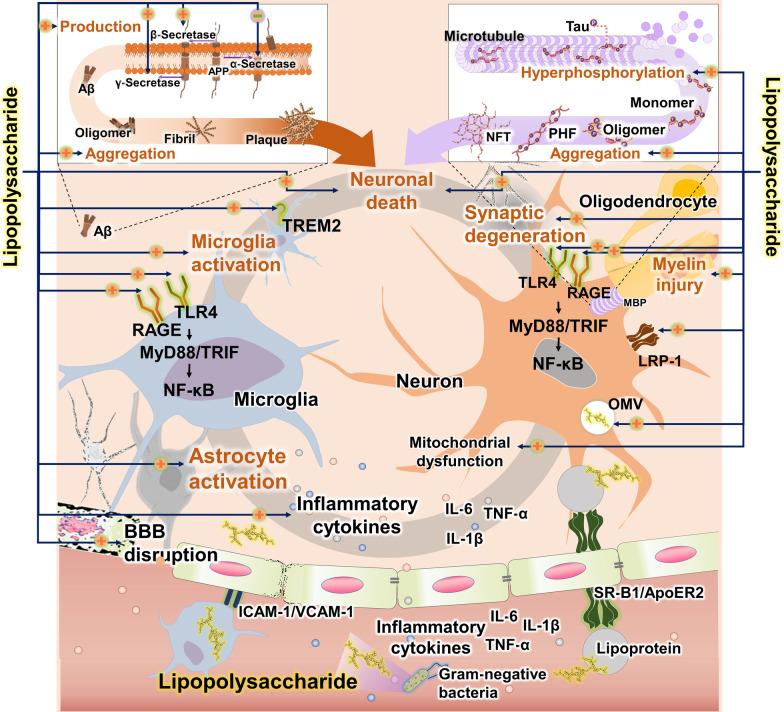Fig. 4.
Pathogenic mechanisms of lipopolysaccharides (LPS) in Alzheimer’s disease. LPS is a characteristic component in the cell wall of gram-negative bacteria and plays a key role in triggering inflammatory response and initiating and promoting AD pathology. LPS promotes the production of Aβ through the increase of β- and γ-secretases and decrease of α-secretase, and stimulates the accumulation of Aβ. LPS induces the impairment of low-density lipoprotein receptor-related protein-1 (LRP-1), which plays a pivotal role in Aβ clearance. LPS is involved in tau phosphorylation, and accelerates the aggregation of phosphorylated tau. LPS activates the microglial TLR4, RAGE, and TREM2 receptors, inducing release of pro-inflammatory cytokines. LPS activation of the TLR4 signaling pathway and LPS entry in the brain through OMV can induce neuronal cell death. ApoER2: apolipoprotein E receptor 2; BBB: blood–brain barrier; IL-6: interleukin 6; IL-1β: interleukin 1 β; LRP-1: low-density lipoprotein receptor-related protein 1; MBP: myelin basic protein; MMP8: matrix metalloproteinase-8; MyD88: myeloid differentiation primary response 88; NF-κβ: nuclear factor kappa β; NFT: neurofibrillary tangles; NLRP1: Nod-like receptor protein 1; OMV: outer membrane vesicle; PHF: paired helical filament; RAGE: receptor for advanced glycation end products; SCFA: short-chain fatty acid; SR-B1: scavenger reception class B type 1; TLR4: Toll-like receptor 4; TNF-α: tumor necrosis factor α; TREM2: triggering receptor expressed on myeloid cells 2; TRIF: Toll/interleukin-1 receptor-domain-containing adapter-inducing interferon-β; VacA: vacuolating cytotoxin A; VCAM1: vascular cell adhesion molecules-1

